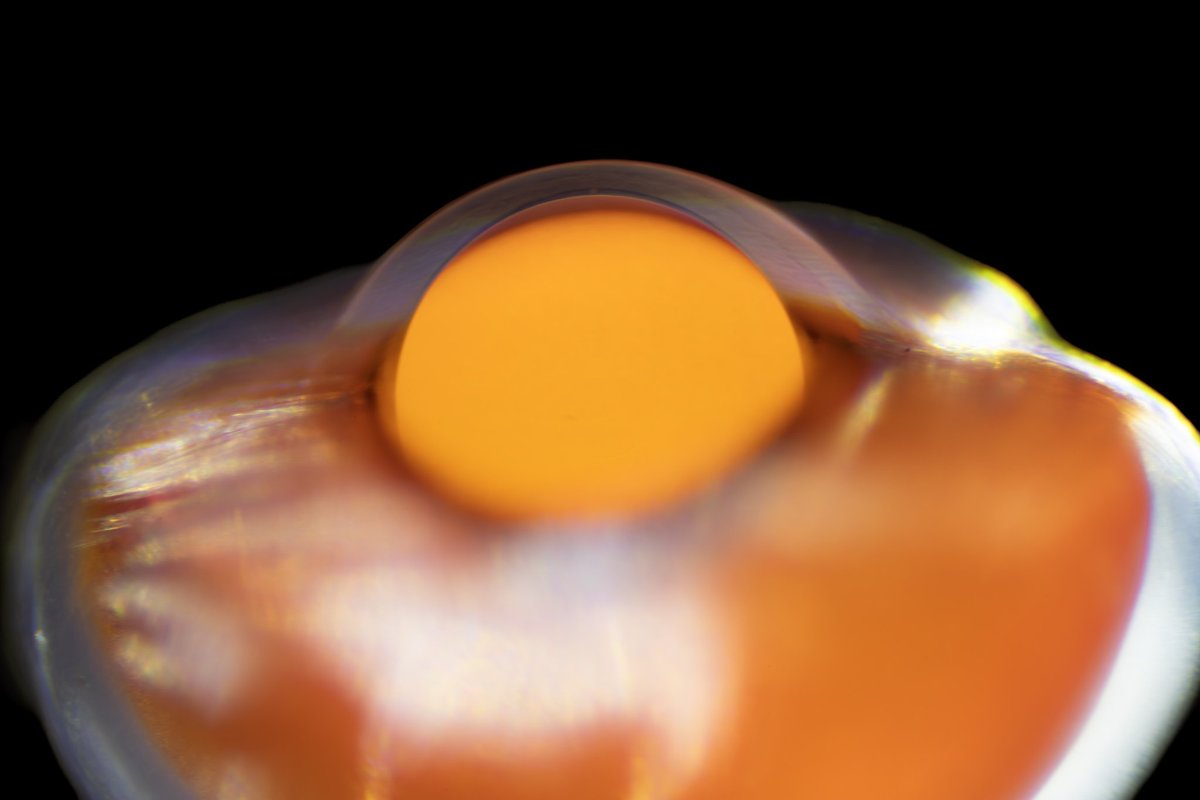For a special #WormWednesday - A big thread about our new paper in @CurrentBiology about the amazing eyes of alciopids!
/1 sciencedirect.com/science/articl…

/1 sciencedirect.com/science/articl…

High-resolution vision, the ability to detect and identify specific objects in the visual world, has only been conclusively shown to have evolved in vertebrates, arthropods, and mollusks (cephalopods). /2 

Polychaetes are generally regarded to have relatively low-resolution vision - Think of the blind common earthworm, or Platynereis, which actually has pretty good eyes by wormy standards.
/3
/3

One group of polychaetes has long been thought to have the hardware for high resolution vision: the alciopids - which sport a bulbous pair of camera eyes! The obvious priority vision has taken in their evolution has made the alciopids a fascinating target for vision scientists /4 

Hermans and Eakin,1974, described the fine structure of their retina: Like cephalopods, their camera eyes have convergently evolved to resemble our own, but with rhabdomeric photoreceptors.
/5
/5

Here are some bonus pictures of Richard Eakin dressed as Mendel and Darwin for his lectures at Berkeley!
/6
/6

Wald (a Nobel laureate for human color vision) and Rayport, 1977, found that the alciopids apparently have two spectral types of photoreceptors in their eyes (a novelty in polychaetes) and one is sensitive in UV!
/7
/7

Beyond this however, the vision literature on alciopids dries up. One problem is that they are not easy to find consistently and collect in good condition. They live in the open ocean, often at depth, are extremely transparent and can be stressed and damaged by nets.
/8
/8
I first encountered an alciopid at @lirrf Lizard Island, AU, when an individual showed up in @DrKateFeller & @meganlinnay's larval mantis shrimp light traps. Look at this cute little guy! Obviously I was hooked. Sadly this was in 2015, and that was the only one I ever saw…
/9


/9


…until I randomly got served this video on Youtube! Holy shit, that is a lot of alciopids! …and at diving depths! This immediately piqued my interest and got in touch with the divers in the video: @Alex_Aquatilis and Armando Macali...
/10
/10
They told me that this was taken at the tiny Isola di Ponza off of Italy, and directed us to the exact spot where we can find the worms! Happily, Ponza is a pretty spectacular spot!
/11
/11

With my Danish colleague, Anders Garm, I headed to Ponza last May and met Armando to go find the alciopids… and find them we did! Every night we headed out for night dives where we found hundreds of individuals from three species of alciopids.
/12
/12

To collect the delicate alciopids we procured a sophisticated apparatus - a 5 liter wine jug from a bar in the harbor - and we were able to collect and transport the worms happily to the lab.
/13
/13
About the lab… sometimes you need to bring the lab to the field. We set up an optics and e-phys lab in our mountainside villa where we could work on the critters.
/14



/14



Which brings us to our recent paper:
We found that the alciopid lenses are perfectly spherical and produce a well focused image in the retina.
/16 sciencedirect.com/science/articl…
We found that the alciopid lenses are perfectly spherical and produce a well focused image in the retina.
/16 sciencedirect.com/science/articl…
Using micro-CT at the SLS @psich_en, we found that the retina is very well ordered and has enough receptors across the entire 150 degree field of view to achieve resolutions over 1 cycles per degree.
/17


/17


This gives the worms a view of the world that may look something like this (thanks to @EleanorCaves' Acuityview)
/18


/18


Finally, we used electrophysiology to record the flicker fusion frequency of the eyes - essentially their temporal resolution or the frames per second at which they can resolve the world - which was above 10 FPS.
/19
/19

Taken together this information strongly suggests the alciopids have high-resolution vision and can segment and identify objects within their visual world - adding them to the elite club of vertebrates, cephalopods and arthropods!
/20
/20

However, major questions still remain: What the heck are they using these spectacular eyes for?! Locating prey, finding mates, detecting bioluminescence? Armed with our new knowledge we will be back on Ponza soon to try to answer these questions!
/21
/21
A huge thanks to the awesome team that made this happen! Anders Garm (@UCPH_Research), Armando Macali (@unitusviterbo) and myself (@LundVision @Lundsuni)
/22
/22

Thanks for reading, and thanks to @Carlsbergfondet and @Vetenskapsradet for supporting this work!
/end
/end
That citation should be Nilsson, 2013 🫠
cambridge.org/core/journals/…
cambridge.org/core/journals/…
• • •
Missing some Tweet in this thread? You can try to
force a refresh





